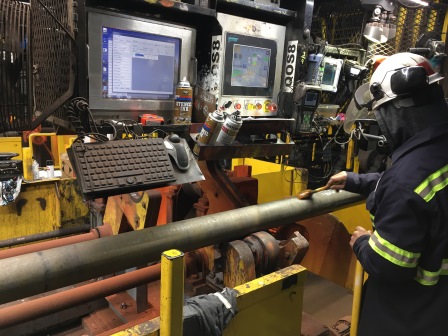Pipe Inspection and Test Plan
This content provides you with a draft Pipe Inspection and Test plan. This pipe ITP is general. You must modify this ITP based your purchase order requirements.

| Pipe Inspection and Test Plan Task | Vendor | TPI Inspection | Client |
|---|---|---|---|
| Mill test reports(incl.heat treatment records,etc.) | H | R | R |
| WPS/PQR, Welders qualifications (records or welder's list) (Note: If welder's ability is judged as doubtful, a new qualification(WQT) test will be required) | H | R | R |
| Non-destructive testing (RT, UT, MT or PT) (Review of all radiographs films) | H | W | R |
| Heat treatment execution, if specified | H | W | R |
| Metallographic examination, if applicable | H | W | R |
| Visual and dimensional control | H | H | R |
| Hydrostatic test, if applicable | H | H | R |
| Painting, coating, marking and color coding check | H | W | R |
| Final visual inspection including packaging and quantity control | H | H | R |
| Documentation review prior to release(Final activity of Technical Inspection) | H | H | R |
| Pre-shipment Inspection | H | H | R |
The I4I Academy Online API 570 Piping Inspector Course addresses pipe inspection and testing in API RP 574 and ASME B31.3.
H: Hold Point implies that relevant production activities shall not proceed until the continuation of work is permitted by Purchaser. (Notification req'd)
W: Witness point implies that Purchaser intends to witness the designated inspection feature. If Purchaser decides not to witness the relevant feature, production can proceed without permission of Purchaser. (Notification req'd)
R: Review inspection & test records (Notification not req'd)
Refer to construction code, this ITP must be modified and completed. It is necessary you add 3 columns in above ITP. You must determine the construction code or vendor specification in one column in the second one the acceptance criteria must be identified and in third column the verifying document must be stated.
The determination of the hold, witness, or review points depend to the purchaser. It is also depend to purchase order requirement and whether you have ordered the pipe to a pipe manufacturer or you have bought manufactured pipe from a supplier or pipe vendor.
If you have bought a manufactured pipes so witnessing of some tests is not possible and you can only review the manufacturer test reports.
Following table is a guide for determination of a inspection level for pipes.
| Material | Schedule | Size | Inspection Class |
|---|---|---|---|
| Carbon Steel | <80 | ≤10" | D |
| Carbon Steel | <80 | >10" | C |
| Carbon Steel | ≥80 | ≤10" | C |
| Carbon Steel | ≥80 | >10" | B |
| Low alloy & Stainless Steel | <80 | ≤10" | C |
| Low alloy & Stainless Steel | <80 | >10" | B |
| Low alloy & Stainless Steel | ≥80 | ≤10" | B |
| Low alloy & Stainless Steel | ≥80 | >10" | A |
| Special Pipe | <80 | ≤10" | B |
| Special Pipe | <80 | >10" | B |
| Special Pipe | ≥80 | ≤10" | A |
| Special Pipe | ≥80 | >10" | A |
Pipe Inspection and Test Plan - Classes
Class A: Mandatory Involvement during the fabrication; 60 to 100% checking of parts forming the batch to be inspected (minimum one piece)
Class B: Optional involvement during the fabrication; 25% to 60% checking of parts forming the batch to be inspected. (minimum one piece)
Class C: 10 to 25% random inspection of the parts forming the batch for which the definition is given by the standard of the product (minimum one piece
Class D: 0 to 10% random inspection of the parts forming the batch for which the definition is given by the standard of the product (minimum one piece)
This ITP is not applied for Line Pipe and you may refer to inspection and test plan for line pipe article to see draft ITP.
Free newsletter!
Sign up to receive my monthly newsletter covering all the latest courses and updates.




New! Comments
Have your say about what you just read! Leave me a comment in the box below.